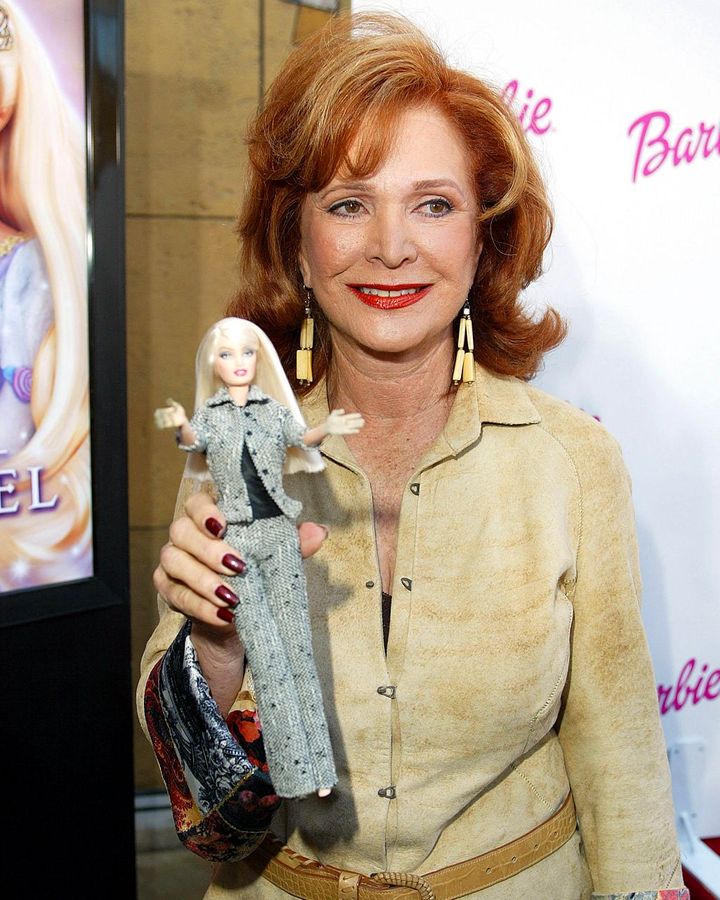The Barbie creator Ruth Handler and her daughter Barbara spoke to the BBC in 1997. Here are seven key insights from their interview – including Barbara’s feelings on being the doll’s namesake, and how some men didn’t like the idea of a doll with a woman’s shape.
R
Ruth Handler and her husband Elliot founded the toy company Mattel in a garage workshop in Southern California in 1945. She created the Barbie doll, which was launched in 1959, and spoke to the BBC five years before her death in 2002.
This interview is an episode of BBC Witness History, available on BBC World Service.
1. Why some men didn’t like the idea of a doll with a woman’s shape
On 9 March 1959, Handler took Barbie to the annual Toy Fair in New York.
RH: Half of our buyers really didn’t like it. The men felt that women would not buy a doll with a woman’s body – with breasts and narrow waistlines and narrow ankles, this adult sexy-looking doll. Men felt that their wives would not want it and that it wouldn’t be right for a child to have that – they were wrong. Women, on the other hand, instantly flipped for that doll. The dolls no sooner landed on the counter than they were snatched up by the women buying them for their daughters.

Ruth and Elliot Handler (Credit: Getty Images)
2. How Handler thought of creating a new fashion doll
RH: My own daughter Barbie used to play with paper dolls. And I had observed her playing with paper dolls with all of her friends for years and years, and I was fascinated by the way they played and the way they project themselves… I used to try to express this idea to Elliot and to the other designers at Mattel, and I couldn’t get any favourable reaction out of anyone. So gradually, I gave up on the idea.
3. The adult-figured doll inspiration she saw in a Swiss shop
Handler had an epiphany, however, when the family went on holiday to Switzerland.
RH: We passed a toy store and there in the window was a beautiful display of an adult-figured doll about 11.5, 12 inches tall, and this doll was sitting on a rope swing dressed in a very European ski clothes, and there were six or seven other of the same dolls each with a different European type ski outfit, where Barbara and I thought the dolls were just gorgeous. We just flipped – the doll’s name was Lilli.
A German doll based on a comic strip published in a national newspaper, Lilli was marketed to both children and adults. Even though she was then 15, Barbara wanted one.
RH: She couldn’t make up her mind which one she wanted because each ski outfit was different. And so I said to the lady in the store, “Can I buy this style and buy that costume?” And the lady in the store looked at me as if I was nuts. Only a crazy American would ask such a silly question. She said: “No, you want that costume, you buy that doll; you want this costume, you buy this doll.” By then my mind had clicked.
The idea of a doll sold alongside a whole wardrobe of outfits was born.

Ruth’s daughter Barbara Handler (Credit: Alamy)
4. How the original ‘Barbie’ responded to the doll
Handler’s daughter Barbara was 18 when the doll was launched.
RH: Barbara hated being known as the inspiration for the Barbie doll – it bothered her.
BH: It was just very odd – people were coming up to me, asking me for my autograph. When people came up and say to me, “Oh, you’re the real Barbie”, I couldn’t understand it because that’s just a name that was given to the doll, but a lot of people thought that they modelled it after me and they made it look like me, and that I was supposed to be it. That’s not true.

Ken was launched in 1961 (Credit: Getty Images)
5. The debate over Ken’s genitalia
In 1961, Ruth and Elliot introduced Ken, named after the couple’s son – but there was a debate about the design.
RH: It was a conscious decision to make the Ken doll without genitals. That was a discussion between the designers and me, in which I lost. The men of the design group all felt that Ken should not have genitals. I wasn’t sure – I argued for a little bump. And we did get a little bump as time went on.
6. Despite criticism from some feminists over Barbie’s caricatured vision of womanhood, Handler was a driven career woman
RH: I felt tremendous guilt about being a mother away from my children, because in those days, there were no career women. Other women didn’t know quite how to treat me. If we did go out to a social occasion, I found myself sitting with the men who were talking business.
7. Handler didn’t want Barbie to intimidate girls
RH: We tried not to make her too beautiful. We were not anxious to have a beautiful doll, because we felt if little girls were going to project themselves through this doll, we didn’t want the little girl to be threatened by the beauty of Barbie.
Love film and TV? Join BBC Culture Film and TV Club on Facebook, a community for cinephiles all over the world.
If you would like to comment on this story or anything else you have seen on BBC Culture, head over to our Facebook page or message us on Twitter.
And if you liked this story, sign up for the weekly bbc.com features newsletter, called The Essential List. A handpicked selection of stories from BBC Future, Culture, Worklife and Travel, delivered to your inbox every Friday.





